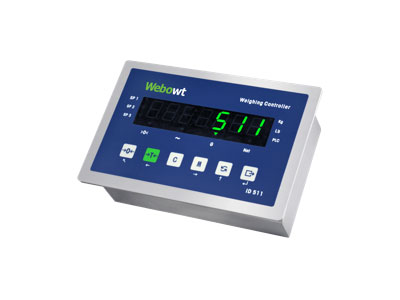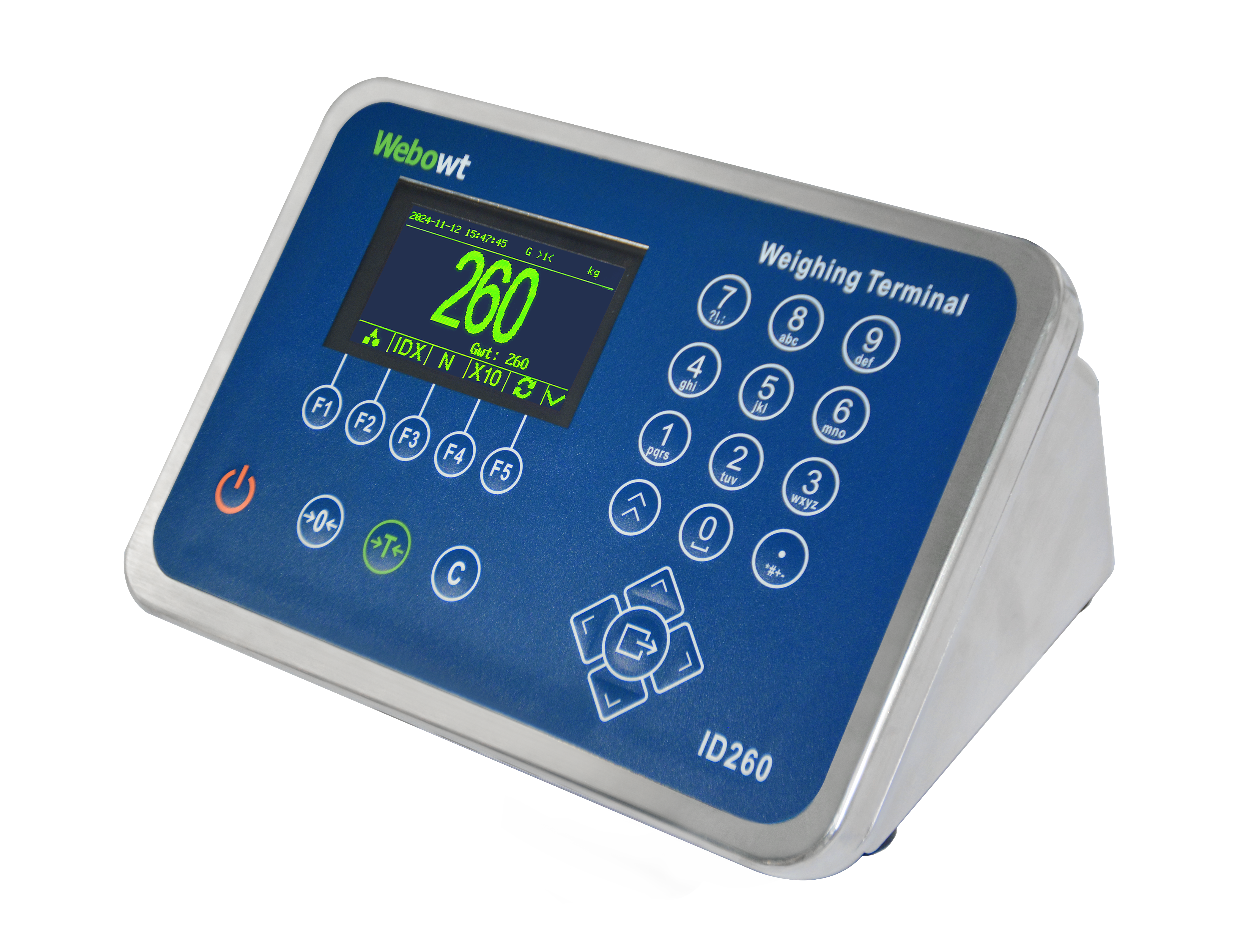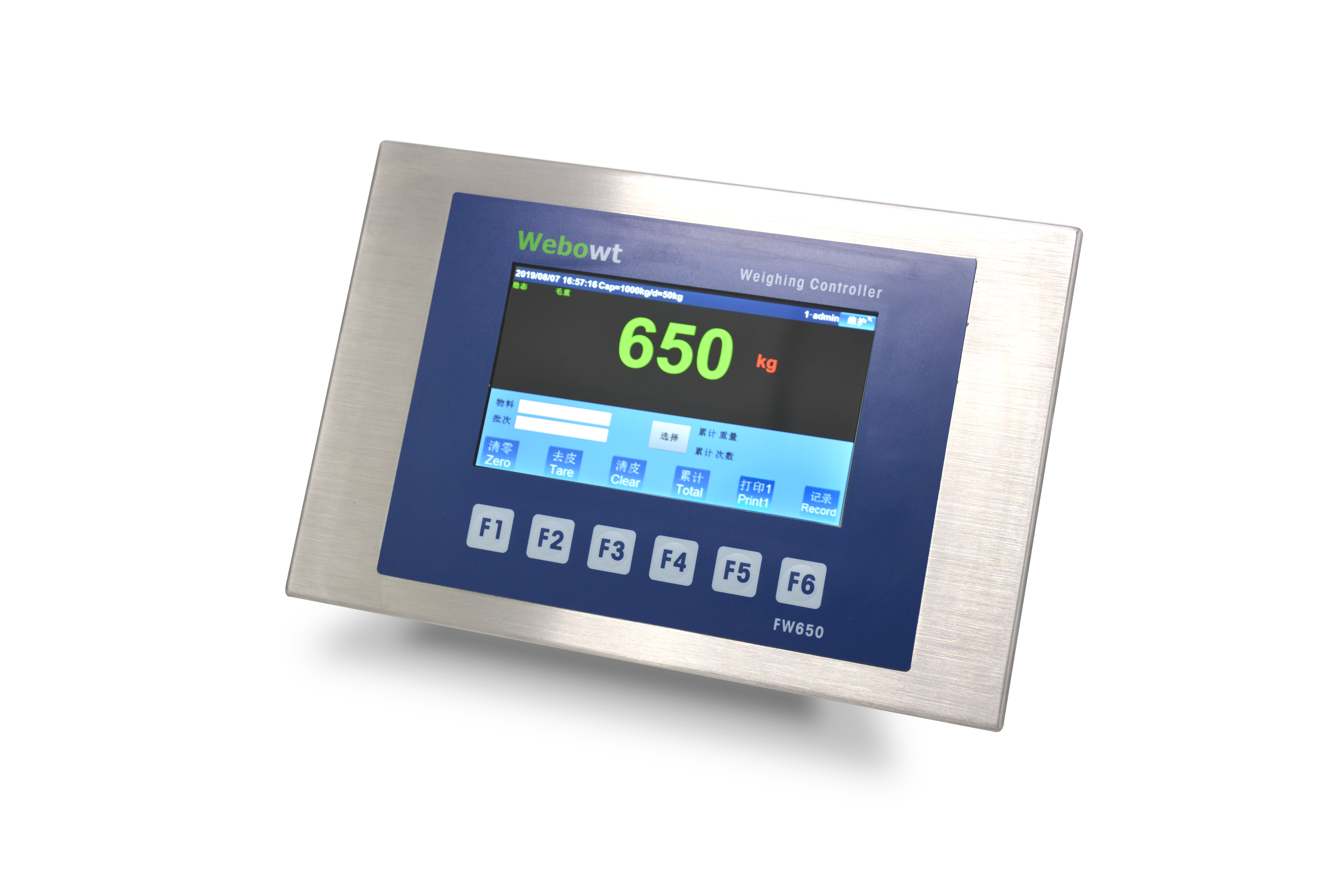- Home
- Products
- Application Industries
- Company
- News
- Contact Us
- Overseas Offices
- All
- Product Name
- Product Keyword
- Product Model
- Product Summary
- Product Description
- Multi Field Search
Views: 0 Author: Site Editor Publish Time: 2025-10-24 Origin: Site

A digital weighing indicator shows the weight on a screen. This device is very important in many weighing systems. It helps you measure weight correctly every day. You can see digital weighing indicators in factories, warehouses, and labs. Industries need quick, clear, and correct weight results. More businesses use automation now. So, more people want digital indicators, especially in China and India. Changzhou Weibo Weighing Equipment System Co., Ltd. gives you digital weighing indicator solutions. These solutions give you accurate and reliable weight measurements every time.
Digital weighing indicators show weight on a screen. They give correct and steady measurements for many industries.
These indicators have important parts like sensors, displays, and microprocessors. These parts work together to change weight into numbers you can read.
It is important to calibrate them often to keep them accurate. Always follow the maker’s rules to get the right weight.
Digital indicators have easy-to-use features like tare functions and saving data. These features help make daily work faster and easier.
You can connect them with USB or WiFi to other systems. This helps manage data better and makes work more efficient.

A digital weighing indicator lets you see weight on a screen. It gets signals from a scale and changes them into numbers. You can find these indicators in factories, labs, and shipping places. They help you measure weight quickly and correctly every time.
A digital weighing indicator has many important parts. Each part does something special. The table below lists the main parts and what they do:
Component | Function |
|---|---|
Sensor | Detects weight and turns it into weak electrical signals. |
Indicator | Takes sensor signals and shows the results. |
Mechanical Structure | Holds the object and sends force to the sensor. |
Analog-to-Digital Converter | Changes the analog signal into a digital one. |
Microprocessor | Works with the digital signal, sets calibration, filters data, and controls the display. |
Display | Shows the final weight in a way you can read (LCD/LED). |
Each part helps you get a clear and correct weight. The sensor feels the weight. The indicator and microprocessor change this into a number you can trust. The display lets you see the final answer.
Digital scale indicators do more than just show numbers. They have features like tare, unit change, and saving data. These features make your job easier and help you keep track of weights.
When you compare digital and analog indicators, you see big differences. The table below shows how they are different:
Feature | Digital Weighing Indicators | Analog Weighing Indicators |
|---|---|---|
Accuracy | More accurate with built-in displays for exact values | Less accurate, needs people to read the scale |
Durability | Needs care because of electronic parts | Usually lasts longer if you take care of it |
Reliability | More reliable because of sensitive sensors | Less reliable, needles can break or stop working |
Readability | Easier to read, shows exact numbers | Harder to read, numbers can move and be unclear |
Digital models are easier to read and more accurate. This means you can trust your weight numbers every time.
A digital weighing indicator is like the brain of the weighing system. You put something on the scale. The sensor feels the weight and sends a signal. The indicator changes this signal into a number you can see. This helps you get the right weight for every item.
The indicator is the 'brain' of the system. It changes signals from load cells into numbers you can read. It also lets you set up different options and manage data.
You use digital weighing indicators in many jobs. Here are some ways people use them:
Industry | Use Case Description | Outcome |
|---|---|---|
Manufacturing | Checks if raw materials have the right weight during production. | Less waste and better quality control. |
Logistics & Shipping | Checks cargo weight for rules and billing. | Correct bills and follows weight rules. |
Pharmaceuticals | Measures chemicals and compounds exactly during mixing. | Right doses and follows safety rules. |
Agriculture | Weighs crops for selling or processing. | Fair sales and good inventory records. |
A digital weighing indicator helps you in many ways. It gives you correct weight data, helps you follow rules, and saves time. You can also connect it to computers or other systems. This lets you save weights and use them for reports or checks.
Digital weighing indicators do more than show numbers. They help you control recipes, check weights, and manage data. You can set them up for simple or hard jobs. This makes them very useful in modern weighing systems.

A digital scale indicator helps you get the right weight. First, you put something on the scale. The load cell inside feels the force and bends a little. Strain gauges inside the load cell notice this change. They make a weak analog signal. The indicator makes this signal stronger so it can be used.
Here are the main steps in signal processing:
Perception: The sensor feels the weight and makes a weak analog signal.
Amplification: The indicator makes the signal stronger so it can be measured.
Transformation: The analog-to-digital converter (ADC) changes the signal into digital form.
Processing and Computing: The microprocessor works with the digital signal, sets calibration, and removes noise.
Display and Output: The indicator shows the weight on the screen and can send the data to other devices.
You can watch the digital scale indicator work as you use it. When you add weight, the load cell makes an analog signal. The amplifier boosts the signal. The ADC turns it into digital data. The microprocessor figures out the final weight and sends it to the display. You get clear and steady readings every time.
You can trust the numbers because the indicator uses smart technology. The microprocessor checks the signal, fixes mistakes, and gives you the right weight. You see the weight right away, so you can make fast choices at work.
Tip: To get the best results, make sure your digital scale indicator is calibrated often.
The digital display is the part you use the most. You see the weight on a bright screen, so it is easy to read. The user interface lets you control the indicator and handle weight measurements.
Digital scale indicators have many features to help you. Some models have screens you can change, remote control, and special apps for data. Some let you use a PC or phone to control the device and move readings to your business systems.
Here is a table showing important display and user interface features:
Feature | Description |
|---|---|
Wide range of indicators | You get different weighing solutions and dosing options. |
Intuitive and customizable | You can set up home screens for quick access to your favorite applications. |
Remote control capability | You control the indicator from a PC or smartphone and transfer data in real time. |
Applications available | You use tools like Weigh2control, Weigh2flow, and Truckflow for better data management. |
You use the digital display to check weights, change units, and save data. The interface is simple, so you do not need special lessons. You can change settings, adjust tare, and save weights with just a few button presses.
Digital scale indicators help you work faster and better. You get quick feedback, clear numbers, and easy ways to use important features. The display shows the weight in big numbers, so you always see it. You can count on the indicator to give you the right weight every time you use it.
Digital scale weight indicators help you get the right weight every time. They use special A/D converters to change signals from the load cell into numbers. This makes the results easy to trust. Accuracy means the scale shows the real weight. Precision means you get the same number each time you weigh something. You need to calibrate your indicator so it matches your system. Always follow the steps from the manufacturer for calibration.
Feature | Description |
|---|---|
Give you more detailed and accurate results. | |
Robust design | Keeps your indicator working well in tough environments. |
User-friendly interface | Makes it easy for you to use, so you avoid mistakes. |
Advanced data management | Helps you track and analyze weight data for better control. |
Changzhou Weibo has models like the ID226, ID260, and ID511. The ID260 has a strong steel body for hard places. The ID511 gives you extra features for better weighing. Each model works with many load cells, so you get good results.
You can link digital scale weight indicators to other devices and systems. This helps you collect and share weight data quickly. You might use USB, Ethernet, WiFi, or RS-232 to connect your indicator to a computer or network. Some models let you save data on a micro-SD card or send it to the cloud.
Connectivity Option | Description |
|---|---|
USB | Transfers data to computers for easy monitoring. |
Ethernet | Connects to local networks for fast data sharing. |
WiFi | Lets you access your scale from anywhere. |
RS-232/RS-485 | Shares data with other equipment over long distances. |
Cloud | Stores and processes data safely online. |
You can control your weighing process from far away. This makes your work faster and helps you get the right weight in real time.
Digital scale weight indicators have simple menus and easy buttons. You can zero the scale, set tare, and change units with just a few presses. The ID226 has a big LED display, so you see numbers easily. The ID260 and ID511 are strong and simple to use, even in busy places.
Stainless steel bodies keep your indicator safe.
Under/accept/over lights show you if the weight is right.
Full numeric keypads let you enter data quickly.
You can use these indicators with many load cells. This means you get good results anywhere. You save time and make fewer mistakes with these easy features.
There are two main types of digital weighing indicators. Basic models only show the weight on a screen. These are good if you just need to see the weight. They do not have extra features or ways to connect to other devices.
Advanced models can do more than just show weight. You can connect them to computers or other machines. They send weight data to your system. This helps you watch and control your work better.
Basic indicators: Only show weight.
Advanced indicators: Connect to other devices and send data.
Pick the model that fits what you need. If you only want to see weight, use a basic model. If you need to share data or control machines, choose an advanced one.
The table below shows how advanced models help you:
Feature | Description |
|---|---|
Versatility | You can use them for easy or hard jobs in many places. |
Connectivity | They work with Ethernet and wireless for easy setup. |
Adaptability | You can pick different screens and cases for your space. |
Ease of Use | They have simple buttons and are quick to set up. |
Many industries use digital weighing indicators. Each Changzhou Weibo model has special things for different jobs.
Unique Features | Operational Needs | |
|---|---|---|
ID226 | Has ABS, SS1, SS2, and SLIM body types | Works in many places |
ID260 | Made of stainless steel, keeps out dust, works in tough spots | Best for hard industrial jobs |
ID511 | Panel mount controller, fits in many systems | Good for different setups |
You can use these indicators in labs, food factories, and chemical plants. In labs, you need to measure chemicals very carefully. In food factories, you must check weights fast and keep things clean. In chemical plants, you need strong tools for hard work. Changzhou Weibo models have the right features for each place.
Tip: Pick the model that fits your work and how much control you need. This will help you get the best results every time.
You must calibrate your digital weighing indicator to keep it accurate. Calibration makes sure the numbers on the display are correct. If you do not calibrate, you might get wrong weights. This can cause mistakes at work. Sometimes, the floor is not flat or the equipment shakes. This can make the measurements different each time. Calibrating often helps stop these problems.
Here is an easy way to calibrate your indicator:
Take everything off the platform and turn on the scale.
Look for the calibration button or port on the back.
Hold the button for a few seconds to start calibration.
Put a known weight in the middle when the scale asks.
Wait until the scale finishes and shows a message like "Cal."
Try other known weights to see if the scale is correct.
Tip: If you use high-precision scales every day or in hard places, calibrate them more often.
How often you calibrate depends on how you use the scale. It also depends on where you use it and what your job needs. The table below shows how often people usually calibrate:
Calibration Frequency | Description |
|---|---|
Weekly/Monthly | Needed if you use the scale a lot or for important jobs |
Annually | Good if you do not use the scale much |
Daily Spot-Checks | Best for jobs that need very exact weights |
You can keep your digital weighing indicator working well with simple care. Clean the platform and display after you use it. Look for loose wires or broken parts. Change or charge the batteries often. Always use the scale on a flat, steady surface for the best results.
Here are some important maintenance tips:
Check for rust, worn parts, or loose pieces.
Do not put too much weight on the scale.
Keep the indicator in a cool, dry place.
Be gentle with the device so it does not break.
Clean the buttons and display so they work well.
If you see errors on the display or the buttons do not work, look for water or dirt. If you still have problems, call the company that made it. Taking care of your scale helps it last longer and gives you good results.
Digital weighing indicators help you work quickly and get correct results. They make your job easier every day. Here are some main benefits:
Benefit | Description |
|---|---|
Accuracy | You see the right weight each time, so you do not guess. |
Efficiency | You save time and make fewer mistakes by using software with your scale. |
Versatility | You can weigh many things and change units when you need to. |
Capacity | You can use strong scales for big and heavy items. |
Durability | You use tough equipment that works well in busy places. |
If you pick a trusted brand like Changzhou Weibo, you get smart technology and strong products. You also get help when you need it. Always check the size, screen, ways to connect, and how to care for it before you buy. This helps you choose the best indicator for your work and keeps everything running well.
A digital weighing indicator shows weight on a screen. You use it to see the weight of things quickly. It gives you correct numbers in places like factories and labs. Warehouses also use it to check weights fast.
You can link your indicator with USB, Ethernet, or WiFi. RS-232 is another way to connect it. This helps you send weight data to computers. Some models let you save data in the cloud for easy use.
Calibrate your indicator depending on how much you use it. If you use it every day, check it each week or month. If you use it less, once a year is fine.
Tip: Always read and follow the instructions from the manufacturer.
Look for these things:
High accuracy and precision
Display that is easy to read
Body that is strong and lasts long
Many ways to connect to other devices
Controls that are simple to use
These features help you trust your results and work better.